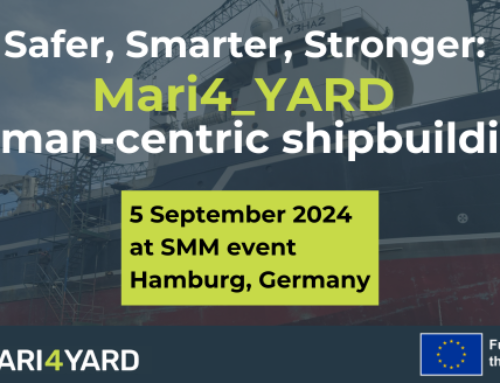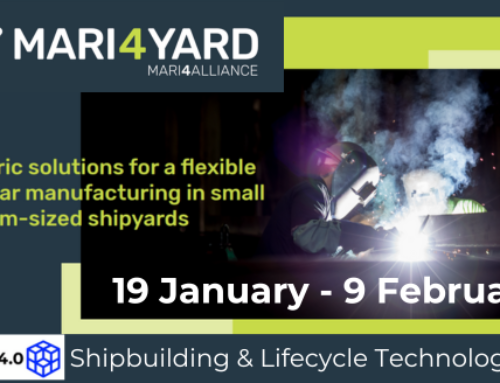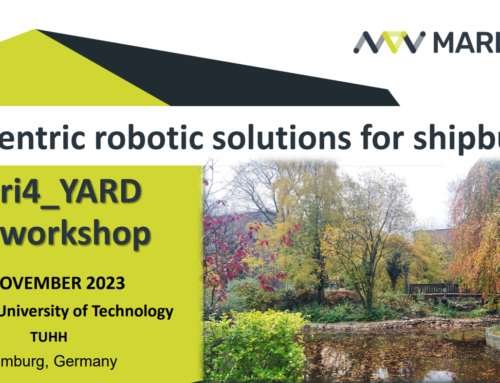The dissemination event in Rotterdam, jointly organised by Mari4_YARD, FIBRE4YARDS project, and Resurgam Project ended yesterday.
Two days to present and share the views on the technologies from the #Industry4.0 that are strengthening the competitiveness of European shipyards, developed by the projects with the support of the European Commission.
We heard directly from the voice of Gabriel Mialocq from CINEA – European Climate, Infrastructure and Environment Executive Agency and Christophe Tytgat from SEA Europe their views on the development opportunities of #EuropeanShipyards and an overview of the new challenges that the European Commission is facing in the #Waterborne sector.
The dialogue between industry experts, researchers and end-users has been stimulated by the interesting points of view of Elena Carrasco from Navantia, S.A., S.M.E, and Hugues Moreau from Bureau Veritas | Marine & Offshore, on the digital transformation that leads the maritime industry to “another dimension”.
Will novel technologies be enough to boost the shipyard industry?
This was the question that drives the 2-days event.
The answer came out from the joint dissemination event was unanimous:
“It is not only the new technologies but also the new ways to work together”, as highlighted by Arnold de Bruijn, representative of NMT | Netherlands Maritime Technology (partner of Mari4_YARD) that hosted the event at RDM InnovationDock.
Three are the keywords for a successful strategy for the European Shipyard Industry:
SUSTAINABILITY: “We all have to be environmental engineers, on top of everything, if we want to develop sustainable solutions”, Xavier Martinez from FIBRE4YARDS project;
COST EFFECTIVENESS: The audience asked the three projects if they have been considering the cost effectiveness of the developed solutions.
“Cost effectiveness is crucial for Mari4_YARD since our target is SME shipyards. Most of the developed solutions are cost effective such as exoskeletons. In other cases we started from some solutions and then we change them to be more cost effective”.
“FIBRE4YARDS project aims at high TRL and thus there should be business models developed during the project implementation. The biggest problem is the market acceptance more than the cost itself.”
From Resurgam Project’s point of view, “changing the mindsets is the most difficult part”, more than the cost effectiveness and competitiveness.
RESKILLING and FOCUS ON HUMAN-MACHINE INTERACTION:
“Navantia, S.A., S.M.E is preparing a reskilling and training program to adapt to this new environment. Our operators are participating in the definition and development of the human-machine interfaces.”, Elena Carrasco answered to the audience that was wondering about the skills and the training the workers at the shop floor need to have.



